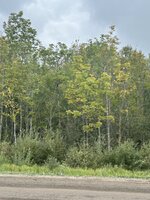Ringbill27
WKR
- Joined
- May 22, 2023
- Messages
- 674
Morning all,
Hunting in northeastern MN public land and the land consists of aspen regeneration, pine stands, clear cuts and swamps (cattail, spruce/tamarack, or Alder/willow). Mostly thick cover.
There is no AG or acorns. I’m struggling to figure out what they are eating and use that to locate them.
When you don’t have AG or acorns what do you look for when looking for the feeds?
PS. The land I’m looking to hunt is not the land from my previous post. I swear I’m not a newb. This land is just different from everything I’ve hunted in the past.
Hunting in northeastern MN public land and the land consists of aspen regeneration, pine stands, clear cuts and swamps (cattail, spruce/tamarack, or Alder/willow). Mostly thick cover.
There is no AG or acorns. I’m struggling to figure out what they are eating and use that to locate them.
When you don’t have AG or acorns what do you look for when looking for the feeds?
PS. The land I’m looking to hunt is not the land from my previous post. I swear I’m not a newb. This land is just different from everything I’ve hunted in the past.
Last edited:

